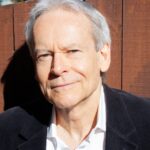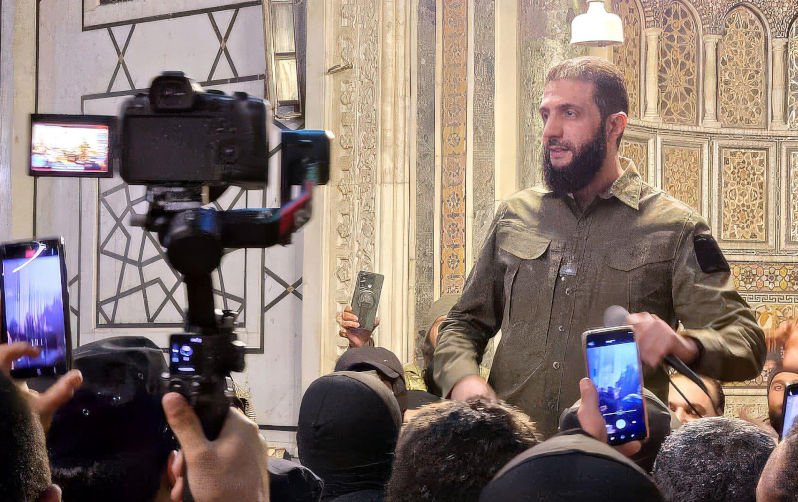On a winter night in 2014 I stood by the side of a highway outside Damascus as a Syrian army officer shone a torch over the contents of my suitcase he had ordered me to empty onto the grey dirt.
The young officer on checkpoint duty was a member of the elite Fourth Armoured Division commanded by President Bashar al-Assad’s younger brother, Maher. His manner conveyed both urgency and menace as he told me and my companions — a photographer and our Arabic interpreter — to get out of our taxi.
He had reason to be edgy: it was the third year of a savage war and Islamist forces were hitting military checkpoints with car bombs.
In this case, however, Syrian immigration officers at the Lebanon border had searched our luggage, catalogued our camera and recording equipment, and issued us with a pass authorising passage to Damascus via a designated fast lane just half an hour earlier.
The army officer contemptuously waved away our official papers, flaunting his authority over a lesser arm of the state – and us. I wondered how he might have treated ordinary Syrians who lacked the protection from arbitrary power usually afforded to authorised foreign journalists in Assad’s Syria.
Fast forward more than four years to 2019, my fourth and last visit to Syria. Assad’s army had retaken most of the country, but the economy was collapsing under the weight of US-led sanctions that had “suffocated” the Syrian people, a United Nations investigation found. Syria was also denied access to its petroleum reserves and major agricultural regions in the US-occupied, Kurdish-controlled north-east. Inflation was rampant and public servants sold family heirlooms to buy bread.
As poverty increased, so did corruption, while the political and business elite appeared blind to the need for reform.
There was another aspect of Assad’s rule that led many Syrians to overlook, if not endorse, political repression and gross inequality. Assad, like his father Hafez before him, supported a largely secular state with freedom of worship. It’s hard to overstate the importance of this in a nation of multiple ethnicities and religions where faith is deeply held.
The biggest minority religion, the Alawites, make up an estimated 12% of the population. There is a substantial Druze community plus Shia, Ismailis and Yezidis. Before war broke out in 2011, Christians were about 10% of the population, but are now thought to be less than half that number.
Today, religious minorities have good reason to fear Hayat Tahrir al-Sham, the jihadist coalition that seized power in Damascus on 8 December. This re-branded derivative of al-Qaeda has set about reshaping pluralist Syria as an Islamic state.
Most at risk are the Alawites, a syncretic, liberal branch of Shia Islam regarded as apostates by the new Sunni fundamentalist regime.
In 2015, I met an Alawite officer commanding a Syrian army detachment outside the town of Yabroud. He was friendly and talkative and said he wanted to visit Australia “when the crisis is over”. A resident of Assad’s home village of Qardaha, he vowed he would never allow himself to be captured by the Islamist enemy. “If they find an Alawi, it’s like they’ve won the lottery,” he said. “They get creative when they kill us.”
I remembered this officer’s words on 21 December when the UN’s anti-genocide envoy warned of a renewed threat facing the Alawites. Since then, a wave of sectarian violence has terrorised Alawite communities.
Syrian Australians who fear for relatives inside Syria have alerted me to numerous atrocity videos posted online by HTS fighters. While I’m unable to verify all videos, some apparently show the killing of unarmed men by HTS. Others show detainees being whipped, stomped on and forced to bark like dogs.
In one video, armed fighters drive slowly through a settlement. One declares, “We are clearing out Alawite villages”. He adds, “There is no god but Allah” and “The worshippers of Ali sit at home afraid.”
In an expanding archive of horrors, a naked man is set on fire in front of a screaming woman. Two badly injured soldiers attached to drips are shot to death in their hospital beds. Two young men with their hands tied are forced to the ground and shot. A bloodied corpse dangles from a rope in front of a baying mob.
HTS troops have attacked Alawite villages with artillery, while in the city of Homs a mob chanted, “Homs is for Sunnis, Alawites must get out”. HTS head Ahmed al- Sharaa has signalled an uncompromising approach to the Alawites by appointing a leader of the fundamentalist Ahrar al-Sham militia as governor of Latakia, the Alawite heartland.
HTS intolerance towards “apostates” was even on display at the Umayyad Mosque in the heart of old Damascus. This majestic eighth-century mosque was formerly open to all, but in one video a leader of a group of armed fighters declares, “This mosque and the land is for Sunni only.”
Syria’s Christian community is ancient and diverse, with Arabic, Armenian and Aramaic speakers. They follow varying streams of Orthodox and Catholic Christianity plus Protestant denominations and Maronites.
While many were able to celebrate Christmas without hindrance, others saw their churches vandalised and Christmas trees set on fire.
Such fanaticism is a sharp break with tradition in Syria, where the Sunni Grand Mufti regularly joined the Greek Orthodox Patriarch for joint Christmas prayers and Muslim families queued to be photographed under Christmas trees.
Throughout years of conflict, Syrian Christians shared with me their fears that their ancient civilisation would be extinguished if Assad’s government lost the war. Many among the Sunni Muslim majority also seemed ready to defend pluralism.
In 2015, I visited the Monastery of the Cherubim on a mountain peak north of Damascus. The supposed burial place of Abel, slain brother of Cain, it was a major pilgrimage site for Christians and Muslims. The monastery had come under Islamist attack and was guarded by soldiers including a local Christian who had rushed home from his truck driver job in Dubai to defend his birthplace. His comrades identified themselves to me as Sunni and Alawite.
HTS remains proscribed as a terrorist organisation by the UN Security Council and numerous governments, including Australia’s. Its leader, Sharaa, is a former ISIS commander who founded HTS’s predecessor, Jabhat al-Nusra, as the Syrian affiliate of al-Qaeda.
However, HTS has had a substantial PR makeover and the media-savvy Sharaa now fronts cable news networks with a polished pitch seeking Western support. His staged photo opportunities with Christian leaders haven’t stopped Christians from defying the Islamists and staging public protests.
Sharaa said morality police led by “legitimate brothers and preachers” would be set up under the Ministry of Internal Affairs. ”Preaching should prevail over use of the stick,” he added, perhaps as reassurance.
Other HTS leaders have foreshadowed a diminished role for women. They may not be biologically suited to certain leadership roles such as judges, an HTS spokesman suggested.
Syria’s new head of women’s affairs, Aisha al-Dibs — the only woman so far appointed to the transitional government — declared there would be no room for women’s organisations that disagreed with HTS. Women should “not […] go beyond the priorities of their God-given nature,” she added.
Such statements sparked a protest rally in Damascus calling for “citizenship without discrimination based on gender, race, religion or sect”. It was met with counter demonstrations including by armed HTS fighters.
Syria’s new rulers say it might take four years to hold elections, but it took them less than a month to announce sweeping Islamist-inspired changes to the school curriculum in history, science, religion, art and literature.
Out went the theory of evolution, the third century Queen Zenobia of Palmyra, love poems and Chinese philosophy, to name a few.
Also excised were unflattering references to Ottoman rule – presumably because Turkey is HTS’s major sponsor.
The curriculum reform sparked a public backlash that forced HTS to promise changes would be kept to a minimum pending a further curriculum review. This attempt to mollify critics was soon undone by the announcement of further changes including abolition of texts discussing sculpture and deletion of national heroes such as a nurse who founded a school for girls.
Meanwhile, on the campus of Aleppo university, Islamist fanatics toppled the “idolatrous” statue of a pre-Islamic poet.
HTS’s charm offensive is paying off in Western capitals: the US has lifted a US$10 million bounty on Sharaa, he’s received delegations from the US, UK, Germany and France, Western humanitarian aid has begun to flow and relief from crushing US-led sanctions is promised.
But the warning signs are clear to those who care to look. The day after Germany’s foreign minister Annalena Baerbock, a self-styled crusader for women’s rights, held cordial talks with Sharaa in Damascus, a video re-emerged of his new minister for justice overseeing the public execution of two women for prostitution in 2015.
It was another reminder that the HTS “transitional government” is mostly made up of the same men who have long controlled the province of Idlib with Turkish support.
A 2023 assessment by the Washington-based Centre for Strategic and International Studies noted that HTS “has been swift in combating political and religious dissent among the residents of the territory it controls… the brutal measures HTS uses to maintain control over its territory are a far cry from the benevolent, citizen-led government shown on its media outlets”.
Similarly, the Syrian Network for Human Rights described the human rights situation in HTS-run Idlib as “abysmal” and “disastrous for a community made up of multiple identities”.
As HTS leaders polish their image, it’s worth revisiting a 2016 announcement by Sharaa that he had cut ties with al-Qaeda to focus on the fight against the Syrian Government rather than global jihad.
Using his nom de guerre, Abu Mohammed al-Jolani, Sharaa made it clear there was no ideological disagreement; his departure was “in accordance with the general guidelines and directives of the (al-Qaeda) leadership… without sacrificing our solid beliefs”.

Chris Ray
Chris Ray is a freelance journalist whose writing on the Syrian war has appeared in Australian, US and UK publications.
